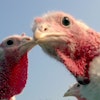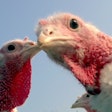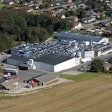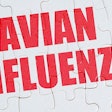During disease a metabolic alteration from anabolism to catabolism is considered essential for the success of the immune system response, as nutrients must be redistributed away from growth to the support of immune system functions to control the pathogenic infection. However, today there is very little quantitative data to enable nutritionists to formulate diets specifically for sick animals.
Immune system responses
It is widely understood that exposure to pathogens triggers the animal’s immune system, which in response releases a host of pro-inflammatory cytokines that modulate not only the immune response, but also, overall metabolism. Research has demonstrated clearly that activation of the immune system by these cytokines (even at subclinical levels) depresses appetite and reduces muscle protein synthesis, while increasing muscle protein degradation. Thus, the metabolic state of the diseased animal switches from anabolism (growth) to catabolism (muscle loss).
Naturally, when the immune system is activated, metabolism is directed towards the synthesis of immune system compounds. As it happens, nutrient requirements for these processes are quite different than requirements for normal growth. Today, there is a real lack of meaningful information regarding the nutrient requirements of diseased animals. All “standard” nutrient requirements have been traditionally derived from dose-titration experiments with relatively healthy pigs reared under near optimal conditions.
Amino acids
The immune system has its own unique set of amino acid requirements, which differ from that required for growth. For instance, acute-phase proteins produced by the liver in response to cytokines have a different amino acid composition than skeletal muscle proteins: the aromatic amino acids (phenylalanine, tyrosine, and tryptophan) are found in larger concentrations in acute phase proteins, which are produced in massive quantities in the liver at the onset of disease. It has actually been suggested that excessive muscle degradation is due to the differences in amino acid profile between muscle protein and acute phase proteins.
In addition, threonine is a major component of immunoglobulin-G and obviously higher dietary concentrations of threonine are required for antibody production than for body growth in pigs. Additionally, immunological stress causes an increase in amino acid maintenance needs as a proportion of total requirement. Overall, it appears that requirements for many amino acids may be increased in challenged pigs, whereas lysine requirements could be much lower.
Minerals
When it comes to minerals, it is already known that a deficiency of zinc greatly reduces immunocompetency and increases the chances of infection. However, zinc hyper-alimentation may also complicate the immune response of infected pigs because it may interfere with normal immune system functions. Indeed, pharmacological dosages of zinc oxide for a prolonged period of time have been often associated with depressed performance.
In addition, as iron is required for the growth and proliferation of most pathogenic microorganisms, blood iron levels are dramatically reduced during infection. Thus, reducing dietary iron supplementation may be a useful intervention strategy to help diseased animals combat or even prevent an infection. Experimental administration of excess iron in challenged pigs has been shown to result in increased time to recovery. Finally, immunologically stressed animals exhibit increased copper levels in plasma, because IL-1 enhances synthesis of ceruloplasmin, an acute phase protein that enhances lymphocyte response.
Vitamins
There is very little information on vitamin requirements during disease. A deficiency of vitamin E and selenium has been known to greatly reduce proliferation of lymphocytes in infected animals, whereas hyper-alimentation of these nutrients increases antibody production and lymphocyte proliferation; something that is highly beneficial. The role of other natural antioxidants is currently unknown, but it is believed to be along similar lines of action. In addition, vitamin A deficiency is associated with reduced epithelial integrity that could potentially facilitate the invasion of pathogenic agents via the gastrointestinal tract or the respiratory system.
Conclusions
The above can only serve as a brief introduction to this exciting topic and also as a guide towards more research that is needed to fully understand this issue. A deeper understanding of nutrient requirements during disease will enable animals to recover faster and reduce the negative effects of disease on growth performance.


















